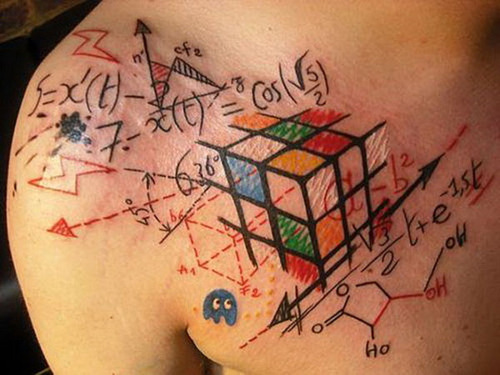Most Popular Posts of 2011
 This week marks two years of blog posts, delivered every Wednesday night (or Thursday morning for those that sleep in), whether you want it or not. I’m proud to say I have not missed one in two years.
This week marks two years of blog posts, delivered every Wednesday night (or Thursday morning for those that sleep in), whether you want it or not. I’m proud to say I have not missed one in two years.
Here are the top 5 posts over the last 12 months (for direct visits to my website):
- The Most Popular Posts of 2010 – seems circular, doesn’t it?
- Upcoming Workshop on Systematic DFMA Deployment – a great time in Providence, RI – June 2011.
- Obsolete Your Best Work – lot’s of great feedback on this one, and a great photo of a guy smashing a Lambo.
- The Obligation of Knowing Your Shit – written after reading a great passage from Post Captain Jack Aubrey standing on the quarterdeck of HMS Surprise (from Patric O’Brian’s famed 21 volume Aubrey–Maturin series on early 19th century British Navy).
- Improve the US Economy, One Company at a Time – I’m part way there.
For those that subscribe to my blog posts, you have different tastes. Here are your top 5:
- Learning Through Disagreement – written after a physics-based discussion with two talented colleges. A great photo of Tip and Reagan – two masters of working across the aisle.
- Pushing on Engineering – how to influence an engineer, written by an engineer.
- Improve the US Economy, One Company at a Time – the only overlap between the lists. I’m still only part way there.
- It’s All About Judgement – innovation is 90% judgement and the other half perspiration. Good luck trying to manage it like a manufacturing process.
- Voice of Technology – who knew listening to Technology could be so sexy.
You thought these posts were important – you voted with your mouse. So, please retweet, email, or send this post to those that matter to you. Pay it forward.
I look forward to another great year. Thanks for reading.
Mike
How to help engineers do new.
 Creating new products that provide a useful function is hard, and insuring they function day-in and day-out is harder. Plain and simple, engineering is hard.
Creating new products that provide a useful function is hard, and insuring they function day-in and day-out is harder. Plain and simple, engineering is hard.
Planes must fly, cars must steer, and Velcro must stick. But, at every turn, there are risks, reasons why a new design won’t work, and it’s the engineer’s job to make the design insensitive to these risks. (Called reducing signal to noise ratio in some circles.) At a fundamental level engineering is about safety, and at a higher level it’s about sales – no function, no sales.
That’s why at every opportunity engineers reduce risk . (And thank goodness we do.) It makes sense that we’re the ones that think things through to the smallest detail, that can’t move on until we have the answer, that ask odd questions that seem irrelevant. It all makes sense since we’re the ones responsible if the risks become reality. We’re the ones that bear ultimate responsibility for product function and safety, and, thankfully, it shapes us.
But there’s a dark side to this risk reduction mindset – where we block our thinking, where we don’t try something new because of problems we think we may have, problems we don’t have yet. The cause of this innovation-limiting behavior: problem broadening, where we apply a thick layer of problem over the entirety of a new concept, and declare it unworkable. Truth is, we don’t understand things well enough to make that declaration, but, in a knee-jerk way, we misapply our natural risk reduction mindset. Clearly, problems exist when doing new, but real problems are not broad, real problems are not like peanut butter and jelly spread evenly across the whole sandwich. Real problems are narrow; real problems are localized, like getting a drip of jelly on your new shirt.
How to get the best of both worlds? How to embrace the risk reduction mindset so products are safe and help engineering folks to try something radically new? To innovate?
We’ve got the risk reduction world covered, so it’s all about enhancing the try-something-new side. To do this we need to combat problem broadening; we need a process for problem narrowing. With problem narrowing, engineers drill down until the problem is defined as the interaction of two elements (the jelly and your shirt), defined in space (the front of your shirt) and time (when the knife drops a dollop on your shirt). Where problem broadening tells us to avoid making peanut butter and jelly sandwiches altogether (those sandwiches will always dirty our shirts), problem narrowing tells use to put something between the knife and the front of your shirt, or to put on your new shirt after you make your sandwich, or to do something creative to keep the jelly away from our shirt.
Problems narrow as knowledge deepens. Work through your fears, try something new, and advance your knowledge. Then define your problems narrowly, and solve them.
Innovate.
Engineering’s Contribution to the Profit Equation
 We all want to increase profits, but sometimes we get caught in the details and miss the big picture:
We all want to increase profits, but sometimes we get caught in the details and miss the big picture:
Profit = (Price – Cost) x Volume.
It’s a simple formula, but it provides a framework to focus on fundamentals. While all parts of the organization contribute to profit in their own way, engineering’s work has a surprisingly broad impact on the equation.
The market sets price, but engineering creates function, and improved function increases the price the market will pay. Design the product to do more, and do it better, and customers will pay more. What’s missing for engineering is an objective measure of what is good to the customer.
Want to be green? Look to your product.
 We’re starting to come to terms with the green revolution; we’re staring to realize that green is good for our planet and even better for our business. But how do we put greenwashing behind us and truly make a difference?
We’re starting to come to terms with the green revolution; we’re staring to realize that green is good for our planet and even better for our business. But how do we put greenwashing behind us and truly make a difference?
To improve recyling, find the non-recyclable stuff in your product and design it out. Make a Pareto chart of non-recyclable stuff (by weight) by major subassembly, and focus the design effort on the biggest brown bars of the Pareto. (Consider packaging a major subassembly and give it its own bar.)
To improve carbon footprint of logistics, find the weight and volume of your product and design out the biggest and heaviest. Make a Pareto chart of weight by major subassembly, and focus the design effort on the heaviest brown bars. Make a Pareto chart of volume by major subassembly, (Make cube around the subassembly and calculate volume in mm3.) and focus the design effort on the biggest bars. (Don’t forget the packaging.)
To improve energy efficiency of your factory, find electricity consumption and design it out. Make a Pareto chart of electricity consumption by major process step then map it to the product – to the element of the product that creates the need for electricity, and focus the design effort on the biggest bars.
Going forward, here are some thoughts to help grow your business with green (and save the planet):
- It’s easier to design out brown than to design in green.
- To design out brown, you’ve got to know where it is.
- The product creates brown – look to the product to eliminate it.
The Abundance Mindset
 We’re too busy. All of us. Too busy. And we better get used to it: too busy is the rule. But how to make too busy feel good? How to make yourself feel good? How to make the work better?
We’re too busy. All of us. Too busy. And we better get used to it: too busy is the rule. But how to make too busy feel good? How to make yourself feel good? How to make the work better?
Pretend there is abundance; plenty for all; assume an abundance mindset.
There’s a subtle but powerful shift with the abundance mindset. Here’s the transition:
me to we
talk to listen
verify to trust
fear to confidence
comply to embrace
compete to collaborate
next month to next week
can’t to could, could to can
no to maybe, maybe to how
The abundance mindset is not about doing more; it’s about what we do and how we do. With the abundance mindset everyone feels better, our choices are better, and our work is better.
Lincoln said “Happiness is a choice.” I think it’s the same with abundance. We’ll always be too busy, but, if we choose, there will always be an abundance of thoughtfulness, caring, and mutual respect.
Secret Sauce that Doubles Profits
 Last month a group of engineers met secretly to reinvent the US economy one company at a time. Here are some of the players, maybe you’ve heard of them:
Last month a group of engineers met secretly to reinvent the US economy one company at a time. Here are some of the players, maybe you’ve heard of them:
Alcoa, BAE, Boeing, Bose, Covidien, EMC, GE Medical, GE Transportation, Grundfos, ITT, Medrad, Medtronic, Microsoft, Motorola, Pratt & Whitney, Raytheon, Samsung, Schneider Electric, Siemens, United Technologies, Westinghouse, Whirlpool.
Presenter after presenter the themes were the same: double profits, faster time to market, and better products – the triple crown of product development. Magic in a bottle, and still the best kept secret of the product development community. (No sense sharing the secret sauce when you can have it all for yourself.)
Microsoft used the secret sauce to increase profits of their hardware business by $75 million; Boeing recently elevated the secret methodology to the level of lean. Yet it’s still a secret.
What is this sauce that doubles profits without increasing sales? (That’s right, doubles.) What is this magic that decreases time to market? That reduces engineering documentation? That reduces design work itself? What is this growth strategy?
When trying to spread it on your company there are some obstacles, but the benefits should be enough to carry the day. First off, the secret sauce isn’t new, but double the profits should be enough to take a first bite. Second, its name doesn’t roll off the tongue (there’s no sizzle), but decreased time to market should justify a taste test. Last, design engineering must change its behavior (we don’t like to do that), but improved product functionality should be enough to convince engineering to swallow.
There are also two mapping problems: First, the sauce has been mapped to the wrong organization – instead of engineering it’s mapped to manufacturing, a group that, by definition, cannot do the work. (Only engineering can change the design.) Second, the sauce is mapped to the wrong word – instead of profit it’s mapped to cost. Engineering is praised for increased profits (higher function generates higher profits) and manufacturing is responsible for cost – those are the rules.
With double profits, reduced time to market, and improved product function, the name shouldn’t matter. But if you must know, its name is Design for Manufacturing and Assembly (DFMA), though I prefer to call it the secret sauce that doubles profits, reduces time to market, and improves product function.
Recharge your brain.
 Battery life of cell phones is horrific. We’re sold on high functionality, communication speed, and beautiful, bright screens, but with all systems up, the phone cannot deliver; we get about half a day. We pare down functionality, and try to make it through the day; we shut off regular requests for updates; we shut down our network connections; dim our screens to save energy. All the high functionality that defines the phone cannot be realized; the functionality that sets it apart from others, the stuff that others only dream of, cannot be realized. Our special capability cannot be used to do our jobs to the fullest; it cannot be used to do our jobs like we know we can.
Battery life of cell phones is horrific. We’re sold on high functionality, communication speed, and beautiful, bright screens, but with all systems up, the phone cannot deliver; we get about half a day. We pare down functionality, and try to make it through the day; we shut off regular requests for updates; we shut down our network connections; dim our screens to save energy. All the high functionality that defines the phone cannot be realized; the functionality that sets it apart from others, the stuff that others only dream of, cannot be realized. Our special capability cannot be used to do our jobs to the fullest; it cannot be used to do our jobs like we know we can.
Another tactic is the power nap – the quick charge in the middle of the day to get us through the crisis. Commandeer a power outlet in a quiet corner, and settle in for a little charge. (Ahh, it feels good to charge up on someone else’s nickel.) But it’s not right that we must ration our capacity for a narrow slice of the day, to save up for a flurry of high-end activity (especially Angry Birds); we should be able to go all day. But we can’t because expectations are out of line with our capability. In this new era of high power draw, our batteries cannot deliver. We must change our behavior.
Nothing beats a regular charge – home at a regular time, turn off the phone, plug in for an uninterrupted charge, and wake up in the morning fully refreshed and ready for full output. For the whole day it’s unique, innovative functionality, all communication networks up and running, and full screen brightness. That’s what you’re paid for, and that’s what you deliver – every day. But if you skip your full charge cycle, even one, it’s back into the unhealthy cycle of half-day battery life and dimmed screens. This is not a good for you, and not a good value for your company. You (and they) need you doing the things only you can do; they (and you) need you contributing at full brightness. Maintaining the regular charge cycle takes discipline, but, over the long term it’s the most productive and enjoyable way to go.
In the new lithium-ion world, we’ve forgotten a hard-learned lesson of the lead-acid era – the trickle charge. With the trickle charge, the battery is taken fully off-line, fully disconnected from the world, with no expectation of output of any kind, and hard-connected to a big charger, a special charger. This charger is usually located in a remote location and hard-wired into a dedicated circuit that cannot be compromised for any reason. For the trickle charge, the battery is connected to the all-powerful charger for two weeks, for a slow, soothing , deep-cycle charge that restores and invigorates. Upon return from the trickle charge, long-forgotten capability is restored and screens are at full brightness.
Used together, ritualistic over-night charging and regular, deep-cycle trickle charging work wonders.
Shut your phone off when you get home and take a long vacation. Your brain needs a re-charge.
Out of office reply: On vacation!
The Voice of Technology
 We’ve all done Voice of the Customer (VOC) work, where we jump on a plane, visit our largest customers, and ask leading questions. Under the guise of learning it’s mostly a mechanism to justify what we already want to do, to justify the products we know want to launch. (VOC should stand for Validate Our Choices.)
We’ve all done Voice of the Customer (VOC) work, where we jump on a plane, visit our largest customers, and ask leading questions. Under the guise of learning it’s mostly a mechanism to justify what we already want to do, to justify the products we know want to launch. (VOC should stand for Validate Our Choices.)
It’s a waste of time to ask customers for the next big thing or get their thoughts on a radical technology. First off, it’s not their job to know the next big thing, it’s ours. The next big thing is bigger than their imagination, never mind what they do today. (That’s why it’s called the next big thing.) And if we wait for customers tell us the next big thing, we’re hosed. (Their time horizon is too short and ours is shorter.) In this case it’s best to declare failure; our competitors figured it out a long time ago (they didn’t wait for the customer) and are weeks from commercialization. We should get busy on the next, next big thing because we’ve already missed this next generation. Next time we’ll silence the voice of the customer (VOC) and listen to the voice of the technology (VOT).
As far as radical technology, if we wait for customers to understand the technology, it’s not radical. Radical means radical, it means game-changing, a change so radical it obsoletes business models and creates unrecognizable, ultra-profitable, new ones. That’s radical. If we don’t start technical work until our customers understand the new technology, it’s no longer radical, and our competitors have already cornered the market. Again, we’ve missed an entire generation. Next time we’ll silence the voice of the customer (VOC) and listen to the voice of the technology (VOT).
Technology has a life force; it has a direction; it knows what it wants to be when it grows up. It has a voice. Independent of customer, it knows where it wants to go and how it will get there. At the highest level it has character traits and preferred paths, a kind of evolutionary inevitability; this is the voice of technology (VOT).
Technology will evolve to complete itself; it will move toward natural periodicity among its elements; it will harmonize itself; it will become more controllable; it will shorten its neural flow paths; it will do yoga to improve its flexibility; its feet will grow too fast and create adolescent imbalance; it will replicate into multiples selves; it will shrink itself; it will improve its own DNA. This is VOT.
Technology cannot tell us its lower-level embodiments (we control that), but it does sing hymns of its high-level wants and desires, and we must listen. No need to wait for VOC, it’s time to listen to VOT.
Like a dog whistle, technologists can hear VOT while others cannot. We understand the genetics of technology and we understand its desires (because we understand its physics.) We can look back to its ancestors, see its trajectory of natural evolution, and predict attributes of its offspring. Before everyone else, we see what will be.
Next time, instead of VOC, ask your technologists what the voice of technology is saying, and listen.
The two parts of innovation
 Innovation has two parts: ideation and commercialization. Ideation, the first part, is all about ideas, and this the part of innovation that comes to mind when we think of innovation. Commercialization, the second part, is all about products. This is the part we don’t think of, and this is the part we’ve got to do better.
Innovation has two parts: ideation and commercialization. Ideation, the first part, is all about ideas, and this the part of innovation that comes to mind when we think of innovation. Commercialization, the second part, is all about products. This is the part we don’t think of, and this is the part we’ve got to do better.
Ideation happens readily, and it happens at the whiteboard, that mystical device that can focus the universe’s creativity onto a 3 foot buy 4 foot sheet. In front of the whiteboard it’s exciting, fast, frenzied; ideas jump directly from ether to whiteboard, and we are only the unconscious conduits. With a dry erase marker in each hand and several other colors at the ready, markers fly about as if guided by a spiritual force; flow charts magically appear with all the blocks and all the right arrows; shirt sleeves are used as erasers to keep up with the flow of ideas. This is what comes to mind when we think about innovation. But this is the easy part. Fact is, we already have enough good ideas, and what we need is better execution, better commercialization.
Commercialization is a different game altogether. Once ideas are created and documented in and understandable way, the real work, the difficult work, begins. The biggest fundamental challenge is how to choose between a recently invented whiteboard idea (with no revenue stream) and a modification of something that sells today (with an existing revenue stream). Traditional net present value techniques aren’t the right answer because they always favor improvements of the existing stuff, and any ranking process must guess at future sales for the whiteboard idea, and guesses are not sufficient to carry the day. It’s a tough road, and a detour may be in order.
As advocate for the whiteboard ideas, choose the path less traveled, take the detour. Figure out where the company wants to go, understand the destination. Then, review all the non-whiteboard ideas, the improvements to existing stuff, and see if those ideas, on their own, can get the company to its new destination. It’s my bet they cannot, that there will be gaps. (But if they can, the whiteboard ideas are dead in the water.) With gaps defined, there is now a rationale, now a reason, to believe in the whiteboard ideas. Finally, some leverage.
Staring with the gap analysis, sprinkle in the best whiteboard ideas, and see what it looks like, see where the ideas could take the company. My bet is the picture looks better with the whiteboard ideas in the mix; my bet is there will now be plausible scenarios where the company can achieve its desired future state. (Plausible scenarios may not sound like much, but they’re a whole lot better than knowing you won’t make it). And once company leaders see how the whiteboard ideas improve the situation, some may get sufficiently jazzed to swap out a few more of the improve-the-old-stuff ideas for more whiteboard ideas.
It’s extremely difficult to challenge the status quo, to go head-to-head with existing revenue streams, but that’s exactly what whiteboard ideas must do. To carry the day, company leaders must say yes to whiteboard ideas at the expense of improve-the-old-stuff ideas. That’s a particularly difficult hurdle since business unit leaders are judged on hitting their numbers (thankfully). The upside of moving the company closer to its desired future state must outweigh the downside of saying no to investments in predictable revenue streams. Let’s be clear, this can only be an emotional decision.
With allocation of resources, the whiteboard idea is off and running, though not home free. It will be continually challenged by the established business units, who, at every turn, will ask to judge the whiteboard idea using improve-the-old-stuff criteria. Talk about the gap analysis where possible.
I’ve found ideation far more fun than commercialization, and commercialization far more difficult than ideation. But like peanut butter and jelly or Oreos and milk, neither has meaning without the other. We’ve got the ideation stuff down, but our execution/commercialization stuff needs serious work.
Though not glamorous, we’ve got to improve the commercialization element of innovation if we are to realize more of its benefits.
It’s all about judgement.
 It’s high tide for innovation – innovate, innovate, innovate. Do it now; bring together the experts; hold an off-site brainstorm session; generate 106 ideas. Fast and easy; anyone can do that. Now the hard part: choose the projects to work on. Say no to most and yes to a few. Choose and execute.
It’s high tide for innovation – innovate, innovate, innovate. Do it now; bring together the experts; hold an off-site brainstorm session; generate 106 ideas. Fast and easy; anyone can do that. Now the hard part: choose the projects to work on. Say no to most and yes to a few. Choose and execute.
To choose we use processes to rank and prioritize; we assign scores 1-5 on multiple dimensions and multiply. Highest is best, pull the trigger, and go. Right? (Only if it was that easy.) Not how it goes.
After the first round of scoring we hold a never-ending series of debates over the rankings; we replace 5s with 3s and re-run the numbers; we replace 1s with 5s and re-re-run. We crank on Excel like the numbers are real, like 5 is really 5. Face it – the scores are arbitrary, dimensionless numbers, quasi-variables data based on judgment. Face it – we manipulate the numbers until the prioritization fits our judgment.
Clearly this is a game of judgment. There’s no data for new products, new technologies, and new markets (because they don’t exist), and the data you have doesn’t fit. (That’s why they call it new.) No market – the objective is to create it; no technology – same objective, yet we cloak our judgment in self-invented, quasi-variables data, and the masquerade doesn’t feel good. It would be a whole lot better if we openly acknowledged it’s judgment-based – smoother, faster, and more fun.
Instead of the 1-3-5 shuffle, try a story-based approach. Place the idea in the context of past, present, and future; tell a tale of evolution: the market used to be like this with a fundamental of that; it moved this way because of the other, I think. By natural extension (or better yet, unnatural), my judgment is the new market could be like this… (If you say will, that’s closeted 1-3-5 behavior.) While it’s the most probable market in my judgment, there is range of possible markets…
Tell a story through analogy: a similar technology started this way, which was based on a fundamental of that, and evolved to something like the other. By natural evolution (use TRIZ) my technical judgment is the technology could follow a similar line of evolution like this…. However, there are a range of possible evolutionary directions that it could follow, kind of like this or that.
And what’s the market size? As you know, we don’t sell any now. (No kidding we don’t sell any, we haven’t created the technology and the market does not exist. That’s what the project is about.) Some better questions: what could the market be? Judgment required. What could the technology be? Judgment. If the technology works, is the market sitting there under the dirt just waiting to be discovered? Judgment.
Like the archeologist, we must translate the hieroglyphs, analyze the old maps, and interpret the dead scrolls. We must use our instinct, experience, and judgment to choose where to dig.
Like it or not, it’s a judgment game, so make your best judgment, and dig like hell.
Pushing on Engineering
 With manufacturing change is easy – lean this, six sigma that, more with less year-on-year. With engineering, not so much. Why?
With manufacturing change is easy – lean this, six sigma that, more with less year-on-year. With engineering, not so much. Why?
Manufacturing is about cost, waste, efficiency, and yield (how to make it), and engineering is about function (what it does) – fundamental differences but not the why. The consequence of failure is the why. If manufacturing doesn’t deliver, the product is made like last year (with a bit more waste and cost than planned), but the product still sells. With engineering, not so much. If engineering mistakenly designs the Fris out of the Frisbee or the Hula out of the Hoop, no sales. That’s the why.
No function, no sales, no company, this is fear. This is why it feels dangerous to push on engineering; push on engineering and the wheels may fall off. This why the organization treads lightly; this is why the CEO does not push.
As technical leaders we are the ones who push directly on engineers. We stretch them to create novel technology that creates customer value and drive sales. (If, of course, customers value the technology.) We spend our days in the domain of stress, strain, printed circuit boards, programming languages, thermal models, and egos. As technologists, it’s daunting to push effectively on engineering; as non-technologists even more. How can a CEO do it without the subject matter expertise? The answer is one-page thinking.
One-page thinking forces engineers to describe our work in plain English, simple English, simple language, pictures, images. This cuts clutter and cleans our thinking so non-technologists can understand what’s happening, what’s going on, what we’re thinking, and shape us in the direction of customer, of market, of sales. The result is a hybrid of strong technology, strong technical thinking, and strong product, all with a customer focus, a market focus. A winning combination.
There are several rules to one-page thinking, but start with this one:
Use one page.
As CEO, ask your technical leaders (even the VP or SVP kind) to define each of their product development (or technology) projects on one page, but don’t tell them how. (The struggle creates learning.) When they come back with fifteen PowerPoint slides (a nice reduction from fifty), read just the first one, and send them away. When they come back with five, just read the first. They’ll get the idea. But be patient. To use just one page makes things remarkably clear, but it’s remarkably difficult.
Once the new product (or technology) is defined on one page, it’s time to reduce the fear of pushing on engineering – one-page thinking at the problem level. First, ask the technical leaders for a one-page description of each problem that must be overcome (one page per problem and address only the fundamental problems). Next, for each problem ask for baseline data (test data) on the product you make today. (For each problem they’ll likely have to create a robustness surrogate, a test rig to evaluate product performance.) The problem is solved (and the product will function well) when the new one out-performs the old one. The fear is gone.
When your engineers don’t understand, they can’t explain things on one page. But when they can, you understand.
 Mike Shipulski
Mike Shipulski